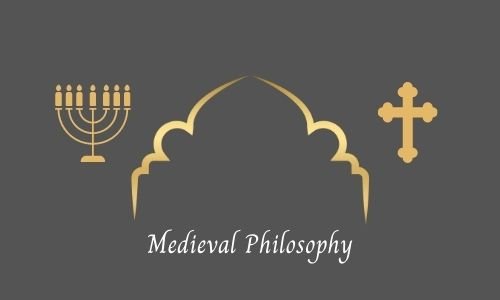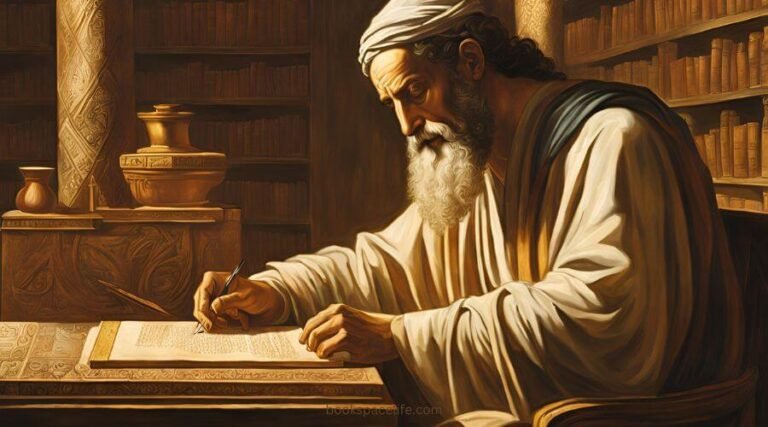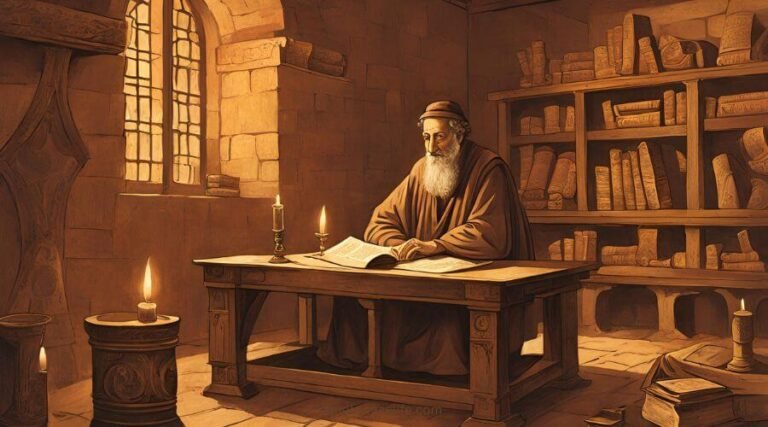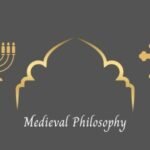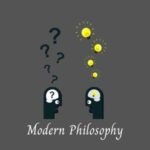Philo of Alexandria
Table of Contents
Saint John of the Cross : The Mystic Poet of the Dark Night of the Soul
Saint John of the Cross (1542 – 1591 CE), a Spanish mystic, poet, Carmelite friar, and theologian, stands as one of the most profound and influential Christian philosophers in the history of spirituality.
Best known for his concept of the “dark night of the soul,” John’s writings describe the soul’s journey toward union with God through a process of spiritual purification and detachment.
His life and works offer a model of resilience and devotion, exemplifying a mysticism that combines poetry, philosophy, and theology.
Together with Saint Teresa of Ávila, his close friend and collaborator, John of the Cross reformed the Carmelite Order, seeking a return to contemplative prayer and asceticism.
His teachings on spiritual growth, humility, and divine love continue to inspire Christian mystics, theologians, and spiritual seekers.
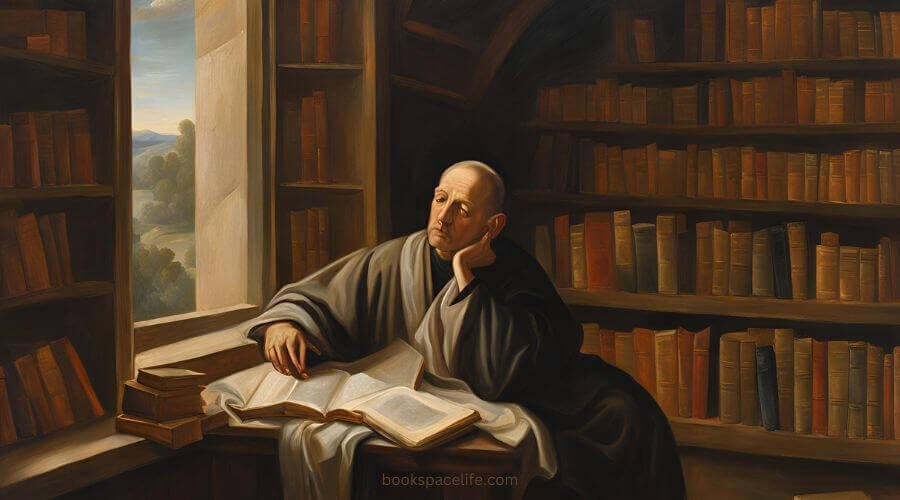
(1) Early Life and Education
John was born Juan de Yepes y Álvarez on June 24, 1542, in Fontiveros, a small village in Castile, Spain.
His family faced financial hardship following the death of his father, who had married below his social class and thus lost his inheritance.
As a result, John, his mother, and his two brothers lived in poverty. Despite their struggles, John’s mother encouraged his education, and he attended a local school where he demonstrated a remarkable intelligence and sensitivity to spiritual matters.
In his teenage years, John worked at a hospital in Medina del Campo, where he tended to the sick and the poor, further deepening his sense of compassion and commitment to service.
While in Medina del Campo, John studied the humanities and entered the Jesuit school, where he received training in philosophy, Latin, and theology.
His education was steeped in both classical and Christian texts, laying a foundation for his future writings on the mystical experience.
(2) Joining the Carmelite Order and Meeting Saint Teresa of Ávila
In 1563, at the age of twenty-one, John joined the Carmelite Order, taking the name “Juan de San Matías” and later becoming known as John of the Cross.
He continued his theological studies at the prestigious University of Salamanca, one of Europe’s most prominent centers of learning.
At Salamanca, he studied Scholastic theology and philosophy, immersing himself in the works of Saint Thomas Aquinas and other influential thinkers, while also beginning to explore mystical theology.
It was in 1567, shortly after his ordination, that John met Saint Teresa of Ávila, a meeting that would profoundly impact both his life and the course of the Carmelite Order.
Teresa was already a well-known figure within the Church, and she was in the midst of reforming the Carmelite Order to promote a return to its roots of contemplation, simplicity, and poverty.
Inspired by her vision, John agreed to assist in her mission, becoming a co-founder of the Discalced Carmelites (Discalced means “shoeless,” symbolizing humility and simplicity).
Together, John and Teresa worked tirelessly to establish reformed convents and monasteries throughout Spain, despite significant opposition.
(3) Philosophy and Mystical Theology
Saint John of the Cross’s philosophical and theological contributions are best understood through his exploration of mysticism and the soul’s journey toward divine union.
His philosophy centers on the idea of self-emptying and detachment as necessary steps in achieving a complete union with God.
John’s approach to the spiritual life emphasizes the soul’s purification, drawing on metaphors of light and darkness to describe the stages of the soul’s journey.
(i) The Dark Night of the Soul
John’s most famous concept, the “dark night of the soul,” refers to the profound sense of emptiness, spiritual desolation, and abandonment that a soul experiences as it approaches union with God.
Far from being a state of despair, John describes the dark night as a transformative process, a time when the soul is stripped of worldly attachments, desires, and even the comforting sense of God’s presence.
This state of “divine darkness” purges the soul, allowing it to grow closer to God by relinquishing all distractions and illusions.
In John’s writings, the dark night is not merely a psychological or emotional experience, but a spiritual reality that purifies the soul at a deep level.
For John, this process is essential for spiritual maturity, as it teaches the soul to trust and surrender completely to God, even when divine presence seems hidden.
The dark night, therefore, is a journey through suffering to reach a state of union, love, and illumination.
(ii) The Ascent of Mount Carmel
In his book The Ascent of Mount Carmel, John provides a detailed exploration of the spiritual journey and offers practical guidance for overcoming obstacles to divine union.
Using the metaphor of a mountain, he describes the path toward God as a climb that requires abandonment of worldly attachments, senses, and self-will. Each step of the ascent involves greater renunciation and deeper self-examination.
John divides the journey into two main purifications: the “active” and “passive” nights. The active night involves conscious effort by the individual to detach from worldly desires and commit to a life of simplicity and prayer.
The passive night, on the other hand, is when God takes control, purging the soul of deeper attachments that the individual may not even be aware of.
Through these “nights,” John articulates a rigorous process of spiritual purification that ultimately leads to illumination and divine union.
(iii) The Spiritual Canticle and Living Flame of Love
John’s other major works, The Spiritual Canticle and The Living Flame of Love, are written in poetic language, capturing the soul’s experience of divine love and intimacy with God.
In The Spiritual Canticle, John draws on the imagery of romantic love to describe the soul’s longing and pursuit of God, presenting God as the Beloved who calls the soul to complete union.
The poem is rich with symbolism and metaphor, depicting the soul’s journey through a language of love, beauty, and desire.
In The Living Flame of Love, John describes the final stages of the mystical journey, where the soul has been fully purified and experiences a profound unity with God.
The work reflects his belief that the soul can reach a state of perfect love, where God’s presence is felt continually, burning within like a flame.
For John, this state of divine union is not reserved for a chosen few, but is possible for anyone who seeks God with an open heart and undergoes the journey of purification.
(iv) Influence on Christian Mysticism and Spirituality
Saint John of the Cross’s teachings on the dark night of the soul, detachment, and divine union have had a lasting impact on Christian mysticism.
His writings provided a framework for understanding the stages of spiritual growth, helping believers interpret periods of suffering and emptiness as part of God’s plan for transformation.
His approach to spirituality encourages humility, patience, and an unwavering commitment to seeking God, even when His presence seems hidden.
John’s influence is seen in the works of later mystics, theologians, and spiritual writers.
His teachings on contemplative prayer and detachment resonated with other religious orders and inspired the development of the Carmelite contemplative tradition.
His writings also influenced spiritual guides across denominations, shaping Christian approaches to prayer and contemplation.
The dark night, in particular, has become a concept familiar to Christians worldwide, serving as a metaphor for periods of doubt, struggle, and spiritual growth.
(4) Enduring Legacy and Canonization
John’s life was not without hardship. In 1577, due to internal conflicts within the Carmelite Order over his reform efforts, he was imprisoned by his fellow friars in a small cell in Toledo for nine months.
During this dark period, he composed some of his most profound poetry, including parts of The Spiritual Canticle.
His imprisonment became a defining moment in his mystical journey, deepening his insight into the “dark night” and the soul’s resilience in the face of suffering.
In 1618, John was beatified, and he was canonized in 1726 by Pope Benedict XIII. His influence continued to grow, and in 1926, Pope Pius XI declared him a Doctor of the Church, recognizing his theological contributions and his role in shaping Christian mysticism.
His life and writings have inspired both laypeople and religious figures, and his works remain essential reading for those interested in deepening their spiritual lives.
(5) Saint John of the Cross in Modern Spirituality
Today, Saint John of the Cross remains a guiding figure for those who seek a path of contemplative prayer and spiritual depth.
His teachings on the dark night offer comfort to individuals experiencing doubt, spiritual dryness, or feelings of isolation in their faith.
His emphasis on surrender, humility, and trust in God’s will resonates across cultures, providing a model for resilience and perseverance.
John’s writings also speak to modern seekers of all faiths, as they explore the universal themes of suffering, love, and transformation.
His poetry, rich with metaphors of divine love and beauty, appeals to readers beyond Christian circles, capturing the essence of the soul’s longing for union with the transcendent.
His vision of spirituality as a journey of purification and divine encounter continues to inspire and guide those who pursue a deeper understanding of faith.
(6) Conclusion: The Lasting Wisdom of Saint John of the Cross
Saint John of the Cross’s life and teachings offer profound insights into the nature of spiritual growth, love, and union with God.
Through his works, he teaches that the path to God is not always easy, but it is transformative.
His concept of the dark night of the soul reassures believers that suffering and emptiness can lead to divine intimacy, and his poetic vision of divine love uplifts the soul.
Saint John of the Cross’s legacy endures as a beacon for those who seek a spirituality that transcends the material world.

